Episcopal Church
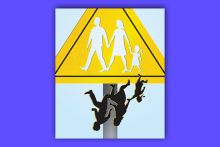
HOW IS IT possible that a major Christian denomination has refused to aid refugees from South Africa? Isn’t “welcoming the stranger” critical to a Christ-like response?
In May this year, the Episcopal Church refused to provide support and assistance to more than 50 white South Africans arriving in the United States to claim refugee status. The denomination took this action in consultation with and the support and endorsement of Rev. Thabo Makgoba, the Anglican archbishop of Cape Town, South Africa.
Despite the Episcopal Church’s nearly 40-year commitment to “seek and serve Christ in migrants and refugees,” it declared an end to its refugee resettlement contracts with the federal government because of Trump’s “white refugee” charade. To understand why the church’s refusal to resettle this group of white South Africans is not antithetical to the gospel, we need to take a closer look at the history of apartheid or racial segregation in my country.
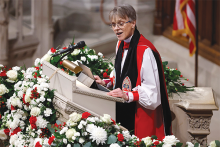
THE WORD “SERMON,” like “lecture,” is an ambiguous one: both a genre of speech and a shorthand for our worst ways of speaking to one another. Outside of a religious context (and to be honest, sometimes even inside one), who wants to be preached at?
Those connotations of arrogance and superiority likely come from authentic experience. But they also miss something important about the sermon as a genre: its foundation in humility, in the practices of reading, reflecting on, and speaking on someone else’s text.
In his 1990 farewell sermon as pastor of Concord Baptist Church in New York, Gardner C. Taylor, one of the great preachers of the civil rights era, asked for forgiveness “if I ever tried to make the Word of God mean what I wanted it to mean.” Sermons (in Christian tradition, as well as in my Jewish tradition) are public acts of commentary. And, as Taylor reminds us, serious commentary is a morally consequential act, because it requires putting one’s own priorities and intentions second to those of the text, an act which is always, at least a little, selfless. At the heart of a sermon is the tension between what the text seems to say and what the preacher wants to say with the text.
When I read or listen to a sermon — even one as politically memorable as Episcopal Bishop Mariann Edgar Budde’s sermon at the national prayer service following President Donald Trump’s inauguration in January 2025 — I try to keep that basic question in mind: What text is she preaching on?

I’M EXCITED THAT more people will come to know Pauli by holding this piece of currency in their hands. Many folks feel connected to Pauli through her faith leadership, her Blackness, their queer identity, or their southern identity. That quarter represents so many things but when you flip it over, there’s that guy on the other side: George Washington. It feels a little strange. It’s also connected to our capitalist system, which is a bit odd. I don’t want our ancestors to become deities because it flattens them. That is a piece of my struggle with this quarter. “St. Pauli” certainly is a saint, but I want Pauli to remain whole and human. I don’t want them to be deified or objectified.
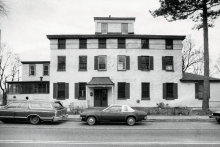
The Episcopal Church’s executive council voted to form a committee to investigate the church’s involvement with forced adoptions that occurred between the 1940s and ’70s.
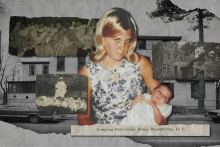
When Francine Gurtler gave birth at age 15, she felt like she lost her voice. Gurtler lived at an Episcopal home for unwed mothers and said the workers of the home coerced her into placing her baby for adoption. “They literally took him from my arms,” she said. The adoption record notes she was “tearful,” but Gurtler said, “I was sobbing, hysterically, uncontrollably, on the ground begging the social worker to let me keep my baby.”

Then, when the heat went out, so did the reluctance to put an end to the parish’s dependence on fossil fuels. The parish installed an all-electric heat pump system, replaced functioning gas-powered appliances with electric versions and installed a third solar array. By 2021, St. Martin’s had become carbon neutral and was certified by Interfaith Power & Light as a “cool congregation.”
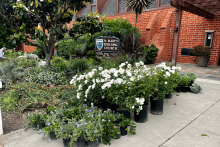
Over the past two years, St. Mary’s Episcopal Church, which sits on a hill four blocks away from the Pacific Ocean in Laguna Beach, Calif., has overhauled its property, adding drought-resistant native plants to its gardens and installing a drip irrigation system to avoid water runoff.
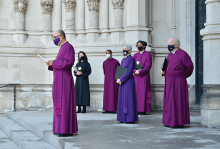
Rt. Rev. Allen K. Shin is the bishop suffragan for the Episcopal Diocese of New York. This excerpt is from a speech Shin delivered in New York City on March 23 following the killing of eight people, six of them women of Asian ancestry, in Atlanta.
“WHEN THE PANDEMIC began, it didn’t take long for the anti-Asian violence to begin. The violence of calling the virus ‘China virus’ and ‘kung flu’ by the highest political office holder of this nation only helped stoke the fire and put fuel on the hatred against Asians.
I have been called racist epithets many times before. I have been told to go back home many times before. But never have I felt fearful for my life as I have during this pandemic of hatred and violence against Asians. While the overall crime rate has declined from 2019 to 2020, hate crimes against Asians have increased nearly 150 percent in [16] major U.S. cities—and 68 percent of the victims have been Asian women.
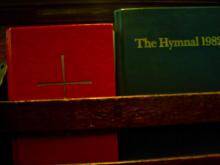
Meyers: A revised prayer book could give us new ways of imagining God and understanding ourselves as children of God. It could be a real force for proclamation of the gospel to people who don’t necessarily think of themselves as Christian. I think it can give us a much deeper understanding and appreciation of creation and our role in caring for creation. We have some of that in the prayer book now, but in a time when the world is literally on fire and we are at a huge ecological crisis, it could, because of the power of language, subtly reshape our understanding and relationship to the world in which we live in a way that might enable us to take better care of it.
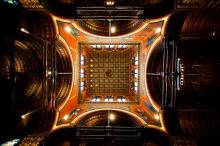
And the Book of Proverbs maintains that the feminine figure of Holy Wisdom, Sophia, assisted God during the creation of the world.

Bio: Bill Terry is rector of St. Anna’s Episcopal Church in New Orleans. In 2007, he started to list the names of individuals recently murdered in the city on a board outside of the church’s building. The church sees the “murder board” as a public memorial, a way to humanize victims of urban violence.
Website: stannanola.org
1. What inspired the murder board? When we talk about murder in the United States, we tend to talk in terms of numbers. Cities talk in terms of a murder rate, which is dehumanizing. We thought we would start listing the names of murder victims rather than numbers. We used to have the names printed, but the printers couldn’t keep up, so we started writing them down. We list the names, the age, and whether the individual was shot or stabbed. That has a visceral impact and, in and of itself, tells a story. There’s nothing glorious about it. It’s a holy site, and people have a holy response to it. Through the board, we began to humanize the deep loss in our city.
2. What impact does the board have? It’s hard to be a Republican or a Democrat when looking at the murder board. It’s hard to be accusing and making aspersions against a race, community, or economic class. More than 2,000 names are on that board alone. They are [people murdered] from 2007 to 2012 in a city of less than 500,000. And during that period, our population got as low as 350,000. I had a police officer who came here and noticed the permanent memorial. He asked if it was all the murders in the state, and I said no, it’s [murders] in New Orleans. He was shocked. Then he went over and started reading the board from left to right. He spent about 20 minutes just slowly walking along the board. He walked back to me, very quiet, tears in his eyes. He said, “I counted three guys I went to high school with. I had no idea, Father.” Then he quietly walked away. That’s the transformative power of our public exhibition.

My son Samson stood in front of our pew. One of the men in the congregation knelt and fixed his bow tie. The Sunday morning sunlight was streaming through the stained glass and the skylight. I hugged friends.This is going to be good, right? I prayed . Please, Lord, I hope we’re doing the right thing.
On Aug. 13 we renamed and blessed my son, Samson Red Gabriel. Samson is transgender. That week we had gone to court to legally change his name and gender, and that week he turned 10. That Sunday held the joy of five baptisms, all the hilarity and devotion that goes along with that, and this incredible rite that had never been done before in the Episcopal Church. As far as we know, nothing like it had been done for a child in a mainline church before, period.
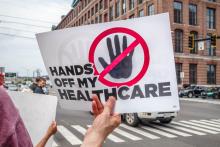
I’m grateful for the 10 governors — Republican and Democrat — who wrote to senators asking them to reject the so-called “skinny repeal” because of how it would affect their residents.
I’m grateful for the thousands of you who heeded Sojourners’ call and contacted your member of Congress to voice your opposition to any bill that would hurt the poor with devastating cuts to Medicaid.
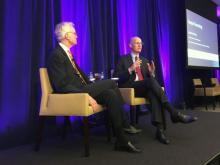
Critical to the success of the movement is the fact that corporations are not simply tolerating activists such as Daly.
Instead, they increasingly see the socially responsible agenda as good business; and, perhaps more important, so do investment firms that are responding to the growing demand for portfolios that reflect a client’s values while also making money as effectively as any other investment.

Washington National Cathedral was founded in 1907 and envisioned as a “Westminster Abbey for America,” which, in part, is why it finds itself at the center of controversy about its role in President-elect Donald J. Trump’s impending inauguration.
For more than a century, the cathedral has tried to stand in two worlds at once, attempting to be both a practicing Christian church and a gathering place for American civic expression. As the cathedral’s former dean, I believe that fidelity to the former role now requires rejecting the latter.
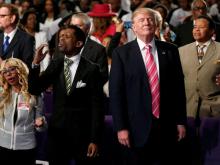
I fear now, as I have feared for months, the impact of his presidency on vulnerable people — including the white and working-class voters in places like my home state of Ohio who lent him their support.
Christians always have disagreements about policy proposals or party platforms during election seasons. But this year, I wonder how white Christians who read the same Scriptures and hold many of the same beliefs that I do could support a man who in word and deed has flaunted the core teachings of our faith.
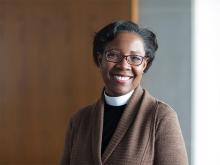
The Episcopal Diocese of Indianapolis has elected the first black, female diocesan bishop in the history of the Episcopal Church.
The Rev. Jennifer Baskerville-Burrows, director of networking in the Episcopal Diocese of Chicago, was elected on the second ballot, during a diocesan convention held at Christ Church Cathedral Indianapolis on Oct. 28.

Orange isn’t a traditional liturgical color in the Episcopal Church.
But on Sunday, June 5, Episcopal clergy across the country are planning to wear orange stoles as a stand against gun violence, inspired by the Wear Orange campaign.
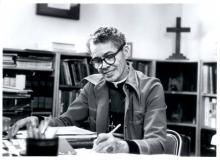
A new residential college at Yale University has been named for an Episcopal saint who was the first African-American woman to be ordained an Episcopal priest.
Anna Pauline Murray, known as “Pauli,” was also civil rights activist who helped shape the legal argument for the Brown v. Board of Education Supreme Court ruling. She was the co-founder of the National Organization for Women and received an advanced law degree from Yale in 1965 and an honorary doctorate from Yale Divinity School in 1979.
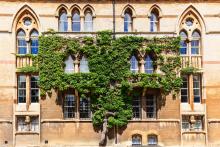
If we who are Christians participate in the political process and in the public discourse as we are called to do — the New Testament tells us that we are to participate in the life of the polis, in the life of our society — the principle on which Christians must vote is the principle, Does this look like love of neighbor? If it does, we do it; if it doesn’t, we don’t.
We evaluate candidates based on that. We evaluate public policy based on that. And that has nothing to do with whether you’re a Republican or a Democrat, liberal or conservative. It has to do with if you say you’re a follower of Jesus, then you enter the public sphere based on the principle of love which is seeking the good and the welfare of the “other.” That’s a game-changer.